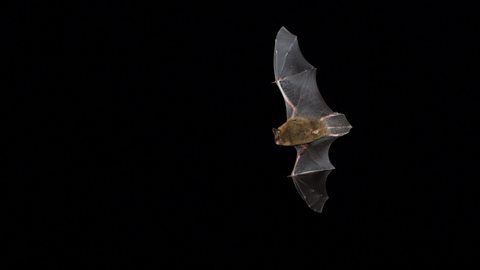Despite orbiting almost 400km higher than the highest passenger plane, it is possible to spot our most famous man-made satellite on a clear evening, even without binoculars or a telescope!
This guide, created in partnership with the National Space Centre, has nine simple tips to help you and your child catch the ISS racing around the Earth…

The International Space Station (ISS) has been orbiting our planet since 1998. An incredible collaboration between 15 countries, the football field-sized station is typically home to seven astronauts at a time. On board, these astronauts have conducted countless experiments, with each one teaching us more about the comfort, survival, and safety of life in space.
While astronauts on board can just take a quick look out the window to see beautiful views of our home planet, it can be a little tricker for families down on Earth to see the ISS flying above our heads.
Share the following tips with your child to make spotting the station easier!

Top tips for spotting the ISS
You can see the ISS wherever you are in the UK for the next couple of weeks, but orbits will usually range from 3-5am - so one for the early birds! Use this online tool from NASA that will let you know when the ISS can be seen from wherever you are.
We can see the ISS from Earth because its giant solar panels reflect the Sun’s light, much like the Moon does. However, it’s not bright enough to be seen during the day, so generally the best time to view the ISS is either at dawn or dusk.
The ISS is not visible every night. Sighting opportunities can range from a few within a week to once a month. It will only be visible for a few minutes when it’s overhead.
You don’t need a telescope or binoculars to observe the International Space Station, your eyes will be good enough!
Head out to a dark site, with as little light pollution as possible. It can take up to half an hour for your eyes to adjust to the dark, so ensure you’re outside with plenty of time to see the ISS fly overhead.

Unlike a star, the International Space Station doesn’t appear still in the sky. In fact, it travels across the sky in a smooth, straight path. You’ll know it isn’t a plane flying overhead because it doesn’t blink or flash red. And it differs from a meteor or shooting star, because its bright light doesn’t streak across the sky or disappear almost instantly.
Sometimes the ISS is high above the horizon, other times it is much lower. For this reason, try to find an observing location with fewer buildings or trees that will obstruct your view of the sky.
Despite being 108m from end-to-end, from down on Earth the ISS will appear as a small, but bright, point of light. This is because the ISS is approximately 400km above Earth’s surface.
The ISS appears to move across the sky quite quickly. This is because it orbits the Earth at speeds of up to 28,000 km/h. At this pace, it orbits the Earth once every 90 minutes, and the astronauts are treated to 16 sunrises and sunsets a day!
Make sure your child waves to the astronauts on board!

The National Space Centre is a science and discovery centre, as well as an educational charity. The Centre has welcomed almost 5 million visitors since opening in 2001, and has a mission to support, educate and inform using the inspiration of space science and exploration. #SpaceForEveryone

More from BBC Bitesize Parents' Toolkit…
Parents' Toolkit
Fun activities, real-life stories, wellbeing support and loads of helpful advice - we're here for you and your child.

How to find the constellations
From the little bear, to the swan, there are plenty of asterisms to teach your child this summer.

How to make a moth magnet
Moths are one of the most diverse animals we have in the UK - follow this guide to see them up close!

How to spot bats in the UK
Where to find them, how to spot them and some bat facts to wow the kids!

How to catch a meteor shower
You might think spotting a shooting star is pure luck, but there is a way to predict when a meteor shower might hit.

